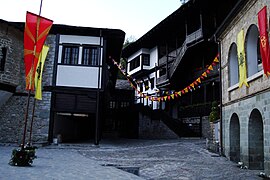Saint Jovan Bigorski Monastery
 | |
| Monastery information | |
|---|---|
| Order | Macedonian Orthodox |
| Established | 1020 |
| Diocese | Diocese of Debar and Kičevo |
| Controlled churches | Church of St John the Baptist |
| People | |
| Founder(s) | Ivan I Debranin |
| Site | |
| Location | Mavrovo and Rostuša Municipality |
| Coordinates | 41°37′19″N 20°36′42″E / 41.62194°N 20.61167°ECoordinates: 41°37′19″N 20°36′42″E / 41.62194°N 20.61167°E |
| Public access | yes |
The Monastery of Saint Jovan Bigorski (Macedonian: Свети Јован Бигорски) is a Macedonian Orthodox monastery located in the western part of North Macedonia, near the road connecting the towns of Debar and Gostivar.
The monastery church is dedicated to St. John the Baptist. One of its most valuable treasures is the iconostasis, created by Petre Filipovski - Garkata[1] from the nearby village of , and considered one of the finest examples of wood-carved iconostases.
History[]
According to its 1833 chronicle, the monastery was built in 1020 by Ivan I Debranin. The Ottomans destroyed the monastery in the 16th century, but it was restored in 1743 by the monk Ilarion, who also constructed a number of cells for monks. The archimandrite Arsenius further expanded the monastery between 1812 and 1825. The historical record also mentions a monk Iov, recognized by some researchers as the future educator Yoakim Karchovski.
Most of the old monastery complex was destroyed by a fire in 2009, while the new sections of the complex and church were saved. Reconstruction of the old sections began in May 2010 with the goal of restoring the buildings as closely as possible to their original style.
Holy Relics[]
The monastery has a large collection of holy relics including John the Baptist, Clement of Ohrid, Lazarus of Bethany, Saint Stephen, Saint Nicholas, Saint Barbara, Paraskevi of Rome, Tryphon, Respicius, and Nympha, and part of the Holy Cross.
Another valuable monastery treasure is an icon dating from 1020 with supposedly miraculous healing power.
Gallery[]
Monastery of St. Jovan (John) Bigorski near Debar
View from the entrance of the monastery
Dome in Saint Jovan Bigorski Monastery Complex near Rostuša, Debar Region
Inside the monastery
Bigorski August 2012
Monastery Sveti Jovan Bigorski
Bigorski August 2012
Bigorski Manastir
Bigorski Manastir

Candles and Fresco at Sv. Jovan Bigorski Monastery
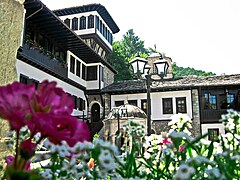
Bigorski manastir

Christian religious buildings
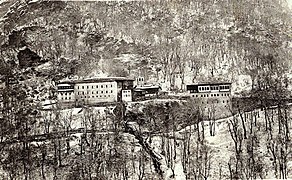
An old postcard of Bigorski Monastery

Saint Jovan Bigorski Monastery, photo from 1930's
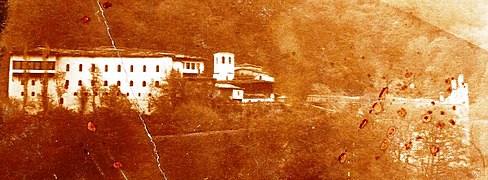
from the 1930s
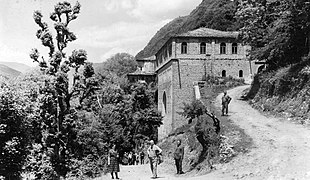
photo taken in 1930's

photo from 1930's
References[]
- ^ Lazar Trifunović, Jugoslavija: umetnički spomenici od praistorije do danas, Jugoslovenska knjiga, 1988, ISBN 8674110053, 265.
External links[]
- Christian monasteries established in the 11th century
- Macedonian Orthodox monasteries
- Eastern Orthodox monasteries in North Macedonia
- Mavrovo and Rostuša Municipality
- Archbishopric of Ohrid






